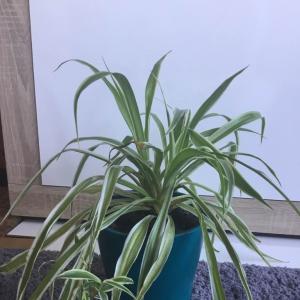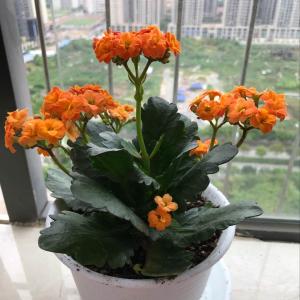文章
巴黎铁塔
2018年05月09日
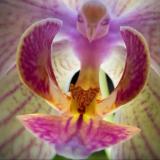
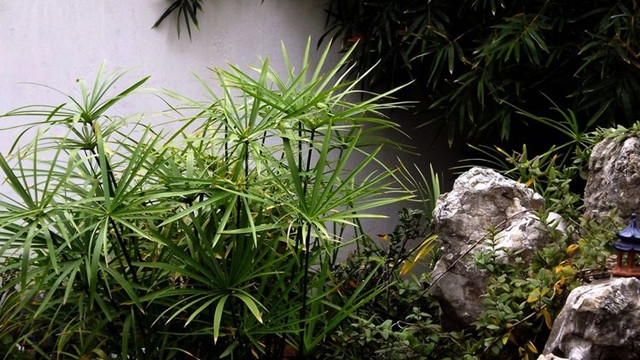
1、剪根重栽
原因:若是水竹的根系受到伤害,就会影响到它对营养的吸收。而吸收不到足够的营养就会导致植株的叶子发黄。
解决方法:将水竹从基质之中取出,检查根须,找到发黑腐烂的根须将之剪下。然后将它放到新的介质中养护。

2、补加肥料
原因:这种情况与上一种类似,同样都是由于养分不足而导致水竹叶子发黄。而不同的是,上一种是内因,这一种是外因。因为长时间没有给水竹施肥,水竹难以吸收到足够的养分,就会出现黄叶。
解决方法:适量的给水中施加一些营养液或是肥料,浓度一定不能太高,一次也不能加太多,否则会引起烧苗。
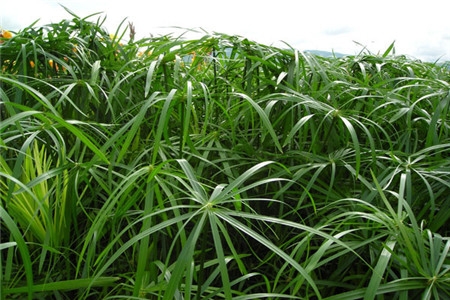
3、增加光照
原因:若是长时间将水竹放在太过阴蔽的地方,让它难以接触到阳光,它就很难进行光合作用合成养分,叶片之中缺少了养分,自然就无法正常生长合成叶绿素,所以也就会发黄了。
解决方法:更换的它的养护地点,将它放到有阳光的来养。不过要注意不能将它放到阳光过于强烈的地方,否则很容易使它的叶片被灼伤。

0
0
文章
巴黎铁塔
2018年05月09日


1、增加水分
原因:兰花喜欢湿润的生长条件,若是长时间处于缺水的环境中就会出现黄叶,此外,若是空气的湿度太低,也有可能让它出现黄叶。
解决方法:适量的为兰花浇一些水,等到养它的土壤干了之后要及时补充水分。此外,若是夏天空气湿度比较低,可以在植株旁边放上一盆清水,来提高空气湿度。

2、减少浇水
原因:一次性浇太多的水会导致土壤中出现积水,影响氧气的进入。兰花的根系在缺乏氧气的情况下无法正常汲取养分,它的叶子就会发黄干枯。
解决方法:情况不是很严重的时候可以用垫高花盆,松土等方法让土中的水分挥发。情况比较严重的话要把兰花从花盆中取出,剪掉被泡坏了的根须,再放到新的土壤中养殖。此后要减少浇水量,以避免这种情况再次发生。

3、减少光照
原因:长时间在盛夏的烈阳下曝晒会灼伤兰花的叶子,让它变黄。
解决方法:将兰花移动到半阴的地方进行养护,在室外养殖的时候除了冬天外都要采取一定的遮阴措施。但是也要注意不能让它完全不见光。
4、无需处理
原因:花龄比较高的兰花会有一些老叶子,随着植株的生长而变黄脱落。
解决方法:这属于兰花正常的生理现象,我们不用采取什么方式去处理它。

0
0
文章
Miss Chen
2018年05月08日

Description: This herbaceous perennial plant is about ½–1½' tall. It consists of a loose cluster of basal leaves on long petioles and a flowering stalk with a few alternate leaves. The basal leaves are up to 4" long and across; they are palmately cleft into about 5 deep lobes, which are in turn divided into 2-3 shallow secondary lobes. These leaves are usually sparsely pubescent and they may have a few dentate teeth along the margins. Their petioles are pubescent or hairy and rather stout. The alternate leaves are clustered near the base of the flowering stalk and they are few in number; their appearance is similar to the basal leaves. Both the basal and alternate leaves are pale greyish green to green. The flowering stalk is more or less erect, terete, stout, and rather fleshy. This stalk is whitish green or whitish red and it is usually covered with fine white hairs; less often, it is glabrous. A raceme of flowers about 3-8" long occurs at the apex of this stalk; each raceme has 6-24 flowers.
Each flower is about ¾–1" across, consisting of 5 petal-like sepals, 4 petals, 3 inner pistils, and stamens. The sepals spread outward from the center of the flower and they are usually some shade of purple or blue-violet; far less often, they are white. The upper sepal forms a long nectar spur behind the rest of the flower; this spur angles upward and it is fairly straight. A few cobwebby hairs may occur along the nectar spur and the posterior surface of the sepals. The upper two petals are quite small and usually white toward the base; they extend backward into the nectar spur. The lower two petals are quite hairy and usually purple or blue-violet like the sepals. These small petals surround the whitish opening that leads to the nectar spur. The pedicels are up to ¾" long and they are usually pubescent. The blooming period occurs during the late spring, lasting about 3 weeks. Each fertile flower is replaced by three spreading follicles (a seed capsule that splits open along one side). Each follicle is oblongoid and angular, terminating in a short beak; it contains several chunky seeds. The root system is tuberous and can form clonal offsets.

Cultivation: The preference is light dappled shade or partial sun, mesic to slightly dry conditions, and soil containing loam, clay-loam, or rocky material. Vegetative growth and flowering proceed quickly during the spring. This wildflower can be cultivated successfully in gardens.
Range & Habitat: The native Dwarf Larkspur occurs occasionally in the southern half of Illinois, while in the upper half of the state it is uncommon or absent (see Distribution Map). Illinois lies along the upper range limit of this species. Habitats include mesic woodlands, moist ravines and thinly wooded slopes (often rocky), thinly wooded bluffs, and partially shaded cliffs along river banks. This species displays a preference for hilly deciduous woodlands.

Faunal Associations: The flowers are cross-pollinated by long-tongued bees primarily, including bumblebees, Anthophorid bees (Anthophora spp., Ptilothrix bombiformis, Synhalonia speciosa), and miner bees (Osmia spp.). These insects suck nectar and sometimes collect pollen. Other floral visitors include the Ruby-Throated Hummingbird, Giant Bee Fly (Bombylius major), swallowtail butterflies (Papilio spp.), other butterflies, skippers, and Sphinx moths. However, the bee fly, butterflies, skippers, and moths are probably less effective pollinators. Insect that feed destructively on Spring Larkspur and other larkspurs (Delphinium spp.) include the aphid Brachycaudus rociadae (found on stems & leaves), flower-eating caterpillars of the moth Heliothis phloxiphagus (Dark-spotted Straw), and maggots of a leaf-miner fly, Phytomyza aconiti. The foliage of Dwarf Larkspur is toxic to most mammalian herbivores.
Photographic Location: A wildflower garden at Crystal Lake Park in Urbana, Illinois.

Comments: The attractive flowers have the shape of the little starmen in children's cartoons. Dwarf Larkspur is shorter and blooms earlier than other Delphinium spp. – this is an adaptation to its woodland habitat. It is distinctive in having 3 widely spreading follicles per flower, while many other Delphinium spp. have follicles that are more or less united at the base. There is some variation in color of the flowers, appearance of the leaves, and hairiness of the stalks and leaves across different populations of Dwarf Larkspur. The only other species in this genus that is native to Illinois, Delphinium carolinianum (Tall Larkspur), consists of an eastern subspecies with pale blue to blue-violet flowers and a western subspecies with pale blue or white flowers (the latter subspecies is often called Prairie Larkspur). Compared to Dwarf Larkspur, Tall Larkspur has more finely divided leaves. Various larkspurs (Delphinium spp.) are often cultivated in flower gardens, but they are usually native to areas that lie west of Illinois, or they are annual species (Consolida spp.) from the Mediterranean area of Europe.
Each flower is about ¾–1" across, consisting of 5 petal-like sepals, 4 petals, 3 inner pistils, and stamens. The sepals spread outward from the center of the flower and they are usually some shade of purple or blue-violet; far less often, they are white. The upper sepal forms a long nectar spur behind the rest of the flower; this spur angles upward and it is fairly straight. A few cobwebby hairs may occur along the nectar spur and the posterior surface of the sepals. The upper two petals are quite small and usually white toward the base; they extend backward into the nectar spur. The lower two petals are quite hairy and usually purple or blue-violet like the sepals. These small petals surround the whitish opening that leads to the nectar spur. The pedicels are up to ¾" long and they are usually pubescent. The blooming period occurs during the late spring, lasting about 3 weeks. Each fertile flower is replaced by three spreading follicles (a seed capsule that splits open along one side). Each follicle is oblongoid and angular, terminating in a short beak; it contains several chunky seeds. The root system is tuberous and can form clonal offsets.

Cultivation: The preference is light dappled shade or partial sun, mesic to slightly dry conditions, and soil containing loam, clay-loam, or rocky material. Vegetative growth and flowering proceed quickly during the spring. This wildflower can be cultivated successfully in gardens.
Range & Habitat: The native Dwarf Larkspur occurs occasionally in the southern half of Illinois, while in the upper half of the state it is uncommon or absent (see Distribution Map). Illinois lies along the upper range limit of this species. Habitats include mesic woodlands, moist ravines and thinly wooded slopes (often rocky), thinly wooded bluffs, and partially shaded cliffs along river banks. This species displays a preference for hilly deciduous woodlands.

Faunal Associations: The flowers are cross-pollinated by long-tongued bees primarily, including bumblebees, Anthophorid bees (Anthophora spp., Ptilothrix bombiformis, Synhalonia speciosa), and miner bees (Osmia spp.). These insects suck nectar and sometimes collect pollen. Other floral visitors include the Ruby-Throated Hummingbird, Giant Bee Fly (Bombylius major), swallowtail butterflies (Papilio spp.), other butterflies, skippers, and Sphinx moths. However, the bee fly, butterflies, skippers, and moths are probably less effective pollinators. Insect that feed destructively on Spring Larkspur and other larkspurs (Delphinium spp.) include the aphid Brachycaudus rociadae (found on stems & leaves), flower-eating caterpillars of the moth Heliothis phloxiphagus (Dark-spotted Straw), and maggots of a leaf-miner fly, Phytomyza aconiti. The foliage of Dwarf Larkspur is toxic to most mammalian herbivores.
Photographic Location: A wildflower garden at Crystal Lake Park in Urbana, Illinois.

Comments: The attractive flowers have the shape of the little starmen in children's cartoons. Dwarf Larkspur is shorter and blooms earlier than other Delphinium spp. – this is an adaptation to its woodland habitat. It is distinctive in having 3 widely spreading follicles per flower, while many other Delphinium spp. have follicles that are more or less united at the base. There is some variation in color of the flowers, appearance of the leaves, and hairiness of the stalks and leaves across different populations of Dwarf Larkspur. The only other species in this genus that is native to Illinois, Delphinium carolinianum (Tall Larkspur), consists of an eastern subspecies with pale blue to blue-violet flowers and a western subspecies with pale blue or white flowers (the latter subspecies is often called Prairie Larkspur). Compared to Dwarf Larkspur, Tall Larkspur has more finely divided leaves. Various larkspurs (Delphinium spp.) are often cultivated in flower gardens, but they are usually native to areas that lie west of Illinois, or they are annual species (Consolida spp.) from the Mediterranean area of Europe.
0
0
文章
Miss Chen
2018年05月08日

Description: This perennial orchid is 1–2½' tall and usually unbranched. The central stem is round in circumference, rather stout, and densely covered with hair. Three or more leaves alternate along this stem. These leaves are up to 6" long and 4" across; they are oval-ovate to ovate, smooth along their margins, and pubescent. Parallel veins are readily observable along the upper surface of each leaf. The base of each leaf clasps the stem. The color of the foliage can vary from dark green to yellowish green, depending on growing conditions and the maturity of the plant. The central stem terminates in 1 or 2 flowers. Each flower is held above the foliage on a long stalk that has a single leafy bract behind the flower. This bract resembles the leaves, but it is smaller in size and lanceolate in shape. Like other orchids, each flower has 3 petals and 3 sepals. However, because two of these sepals are fused together, there appears to be only 2 sepals.
The lower petal is in the shape of a slipper or a pouch with an opening on top; it is bright yellow, shiny, and 1½–2" in length. Within the interior of this petal, there are frequently reddish brown dots. The 2 lateral petals are very narrow, more or less twisted, and 2–3½" in length. These 2 petals vary in color from greenish yellow to brownish purple and they have fine veins running from their bases to their tips. The sepals form an upper hood and a lower hood. They are broader and shorter than the lateral petals, otherwise their appearance is similar. Both the lateral petals and sepals are more or less pubescent. The reproductive organs are located toward the posterior of the slipper-like lower petal. The blooming period occurs from late spring to early summer and lasts about 3 weeks. There is usually no noticeable floral scent. If a flower is successfully pollinated by insects (often this doesn't occur), it will form a seedpod. When this seedpod splits open, the fine seeds are easily carried aloft by the wind. The root system consists of a tuft of fleshy fibrous roots. When several plants occur together, they are often clonal offsets of the mother plant.

Cultivation: The preference is partial sun to light shade, moist to slightly dry conditions, and a soil that consists of loam or sandy loam. Young plants require the presence of appropriate endomycorrhizal fungi in the soil in order to flourish. Starting plants from seed is the job of an expert, although it is possible to successfully transplant large plants that have been grown in a greenhouse. This is one of the easier orchids to maintain in a flower garden.
Range & Habitat: The native Yellow Lady's Slipper is an uncommon plant that is widely scattered across Illinois (see Distribution Map). It is less common than formerly, but still persists in colonies of variable size at several sites. Habitats include moist to dry deciduous woodlands, sandy woodlands and savannas, thinly wooded bluffs along rivers, wooded slopes, and forested bogs. The size of local populations can increase in response to fallen trees from windstorms, or occasional wildfires, as this reduces excessive shade from woody vegetation. Some authorities regard this orchid as a native variety of Cypripedium calceolus, which occurs in Eurasia. Under this system of classification, its scientific name is Cypripedium calceolus pubescens.

Faunal Associations: The showy flowers attract mostly small bees and various flies. In North America, Robertson (1929) and Stoutamire (1967) observed honeybees, little carpenter bees (Ceratina spp.), mason bees (Osmia spp.), Halictid bees (Agapostemon sp., Lasioglossum spp.), and Andrenid bees (Andrena spp.) visiting the flowers. Some of these bees were regarded as effective at cross-pollination of the flowers, while other bees became trapped in the flowers and died. Miscellaneous flies and beetles were also observed to visit the flowers, but they were regarded as ineffective pollinators. The showy flowers are deceptive because they induce insects to explore the flowers in the expectation of a reward, but they contain no nectar and their pollen is unavailable to them. Two insects have been observed to feed on the Yellow Lady's Slipper Orchid: adults and larvae of a weevil (Stethobaris ovata) and larvae of a Scathophagid fly (Parallelomma vittatum). Adults of this weevil feed on the shoots, buds, and flowers, while its larvae feed within the seedpods of this orchid. Larvae of the preceding fly are leaf-miners. White-tailed Deer readily consume the foliage of this and other orchids, and local populations may require a deer-resistant fence for protection where these animals are abundant.
Photographic Location: The slope of a wooded bluff in Vermilion County, Illinois.

Comments: This is one of the largest and most attractive orchids in Illinois. It is more abundant than most species of orchid, although by no means common. While the flowers are in bloom, it is easy to identify this plant as a Cypripedium sp. (Lady's Slipper Orchid) because of the slipper-like lower petals. The only other species that it can be confused with, Cypripedium parviflorum (Small Yellow Lady's Slipper), has similar flowers that are smaller in size. The lateral petals of its flowers are less than 2" long, while the slipper-like lower petal is about ¾–1¼" in length. The flowers of this species are more likely to be fragrant. The Small Yellow Lady's Slipper usually has a pair of leaves toward the base of the central stem, while Yellow Lady's Slipper usually has 3-5 leaves along the central stem. Some authorities classify the Yellow Lady's Slipper as a variety of the Small Yellow Lady's Slipper, or Cypripedium parviflorum pubescens, rather than a distinct species. Regardless of its classification, when this orchid is not in bloom, it can superficially resemble Polygonatum commutatum (Solomon's Seal) and similar species in the Lily family. However, the central stem of this orchid and the upper surfaces of its leaves are pubescent, while the latter plants have stems and upper leaf surfaces that are waxy and glabrous.
The lower petal is in the shape of a slipper or a pouch with an opening on top; it is bright yellow, shiny, and 1½–2" in length. Within the interior of this petal, there are frequently reddish brown dots. The 2 lateral petals are very narrow, more or less twisted, and 2–3½" in length. These 2 petals vary in color from greenish yellow to brownish purple and they have fine veins running from their bases to their tips. The sepals form an upper hood and a lower hood. They are broader and shorter than the lateral petals, otherwise their appearance is similar. Both the lateral petals and sepals are more or less pubescent. The reproductive organs are located toward the posterior of the slipper-like lower petal. The blooming period occurs from late spring to early summer and lasts about 3 weeks. There is usually no noticeable floral scent. If a flower is successfully pollinated by insects (often this doesn't occur), it will form a seedpod. When this seedpod splits open, the fine seeds are easily carried aloft by the wind. The root system consists of a tuft of fleshy fibrous roots. When several plants occur together, they are often clonal offsets of the mother plant.

Cultivation: The preference is partial sun to light shade, moist to slightly dry conditions, and a soil that consists of loam or sandy loam. Young plants require the presence of appropriate endomycorrhizal fungi in the soil in order to flourish. Starting plants from seed is the job of an expert, although it is possible to successfully transplant large plants that have been grown in a greenhouse. This is one of the easier orchids to maintain in a flower garden.
Range & Habitat: The native Yellow Lady's Slipper is an uncommon plant that is widely scattered across Illinois (see Distribution Map). It is less common than formerly, but still persists in colonies of variable size at several sites. Habitats include moist to dry deciduous woodlands, sandy woodlands and savannas, thinly wooded bluffs along rivers, wooded slopes, and forested bogs. The size of local populations can increase in response to fallen trees from windstorms, or occasional wildfires, as this reduces excessive shade from woody vegetation. Some authorities regard this orchid as a native variety of Cypripedium calceolus, which occurs in Eurasia. Under this system of classification, its scientific name is Cypripedium calceolus pubescens.

Faunal Associations: The showy flowers attract mostly small bees and various flies. In North America, Robertson (1929) and Stoutamire (1967) observed honeybees, little carpenter bees (Ceratina spp.), mason bees (Osmia spp.), Halictid bees (Agapostemon sp., Lasioglossum spp.), and Andrenid bees (Andrena spp.) visiting the flowers. Some of these bees were regarded as effective at cross-pollination of the flowers, while other bees became trapped in the flowers and died. Miscellaneous flies and beetles were also observed to visit the flowers, but they were regarded as ineffective pollinators. The showy flowers are deceptive because they induce insects to explore the flowers in the expectation of a reward, but they contain no nectar and their pollen is unavailable to them. Two insects have been observed to feed on the Yellow Lady's Slipper Orchid: adults and larvae of a weevil (Stethobaris ovata) and larvae of a Scathophagid fly (Parallelomma vittatum). Adults of this weevil feed on the shoots, buds, and flowers, while its larvae feed within the seedpods of this orchid. Larvae of the preceding fly are leaf-miners. White-tailed Deer readily consume the foliage of this and other orchids, and local populations may require a deer-resistant fence for protection where these animals are abundant.
Photographic Location: The slope of a wooded bluff in Vermilion County, Illinois.

Comments: This is one of the largest and most attractive orchids in Illinois. It is more abundant than most species of orchid, although by no means common. While the flowers are in bloom, it is easy to identify this plant as a Cypripedium sp. (Lady's Slipper Orchid) because of the slipper-like lower petals. The only other species that it can be confused with, Cypripedium parviflorum (Small Yellow Lady's Slipper), has similar flowers that are smaller in size. The lateral petals of its flowers are less than 2" long, while the slipper-like lower petal is about ¾–1¼" in length. The flowers of this species are more likely to be fragrant. The Small Yellow Lady's Slipper usually has a pair of leaves toward the base of the central stem, while Yellow Lady's Slipper usually has 3-5 leaves along the central stem. Some authorities classify the Yellow Lady's Slipper as a variety of the Small Yellow Lady's Slipper, or Cypripedium parviflorum pubescens, rather than a distinct species. Regardless of its classification, when this orchid is not in bloom, it can superficially resemble Polygonatum commutatum (Solomon's Seal) and similar species in the Lily family. However, the central stem of this orchid and the upper surfaces of its leaves are pubescent, while the latter plants have stems and upper leaf surfaces that are waxy and glabrous.
0
0
文章
Miss Chen
2018年05月08日

Description: This herbaceous perennial plant is ½–1½' long; it has ascending to sprawling stems that branch occasionally. The stems are purplish green to dark reddish purple, sharply 4-angled, stiff, and glabrous to softly hairy. At intervals along these stems, there are pairs of opposite leaves; they are more or less sessile. The leaves are ¾–1½" long and about one-third to two-thirds as much across; they are lanceolate, ovate, or ovate-cordate in shape, while their margins are sparingly toothed and slightly ciliate. The tips of the leaves are acute, while their bases are rounded to slightly cordate. The upper and lower leaf surfaces are yellowish green, medium green, or dark green; they are glandular-punctate and often softly hairy along the major veins. Leaf venation is pinnate. The foliage of this plant has a strong mint aroma, especially when it is crushed. Small cymes or dome-shaped panicles of flowers occur from the axils of the middle to upper leaves, and they also terminate the upper stems. The branches and pedicels of these inflorescences are similar to the stems in their characteristics, except they are more slender.
Each flower is 6-8 mm. (1/4" to 1/3") in length, consisting of a tubular corolla with 4 spreading lobes, a tubular calyx with 5 teeth, 2 strongly exserted stamens, and a 4-parted ovary with a strongly exserted style. The corolla is pink or lavender (rarely white) and softly hairy along its exterior; its 4 lobes are similar in size. The calyx is light green to light reddish purple with 10 raised nerves that are a darker shade of green or reddish purple; it is glandular-punctate. The teeth of the calyx are triangular in shape and similar in size; they are shorter than the tube of the calyx. The filaments of the stamens are white to light purple, while their anthers are pink to lavender, becoming brown with age. The slender style is white to light purple; it has a bifurcated tip. The calyx is noticeably shorter than the corolla, while the stamens and style are almost twice the length of the corolla. The blooming period occurs from late summer to mid-autumn, lasting about 1½ months. Afterwards, each flower is replaced by 4 tiny brown nutlets. These nutlets are about 1 mm. long, about 0.7 mm. across, broadly ellipsoid and bluntly 3-angled in shape; they are small enough to be blown about by the wind. The root system is fibrous, forming small root-buds for next year's stems.

Cultivation: The preference is partial sun to medium shade, mesic to dry conditions, and shallow rocky soil that is somewhat acidic. Excessive moisture on the leaves can cause a rust-fungus to develop. This plant can also adapt to ordinary garden soil if taller and more aggressive ground vegetation is kept away from it.
Range & Habitat: The native American Dittany is occasional to locally common in SW Illinois and the southern tip of Illinois (see Distribution Map). Illinois lies along the northern range-limit of this plant. Habitats include upland rocky woodlands, thinly wooded bluffs, upper wooded slopes, and semi-shaded areas of sandstone cliffs. American Dittany is found in association with upland oak-hickory woodlands, especially where sandstone is close to the soil surface. It is usually found in high quality natural areas where ground vegetation is relatively sparse.

Faunal Associations: Very little information is currently available about the floral-faunal relationships of this plant. The flowers are probably cross-pollinated by various flies (Blanchan, 1900) and also bees. According to Rudolph et al. (2006), it is a moderately important nectar plant of migrating Monarch butterflies during the autumn. The caterpillars of a monophagous or oligophagous moth, Stephensia cunilae, mine the leaves (Braun, 1948). This plant is also recorded as one of the hosts of a polyphagous leaf beetle, Capraita circumdata (Clark et al., 2004). Because of the strong mint fragrance of the foliage, mammalian herbivores (deer, groundhogs, etc.) usually avoid its consumption.
Photographic Location: The wildflower garden of the webmaster in Urbana, Illinois.
Comments: American Dittany (Cunila origanoides) can adapt to shade gardens and its pinkish flowers provide a welcome alternative to the more common autumn-blooming goldenrods and asters. The common name of this plant may refer to its resemblance to a Mediterranean species, Dittany of Crete (Origanum dictamnus). American Dittany also resembles the cultivated culinary herbs, Oregano (Origanum vulgare) and Marjoram (Origanum majorana), except its flowers have only 2 fertile stamens rather than 4 fertile stamens, its leaves are usually larger in size, and its leaf tips are more acute than those of the latter species. American Dittany can be distinguished from other similar species in the Mint family by means of a combination of the following characteristics: 1) the presence of only 2 fertile stamens, rather than 4 fertile stamens, on its flowers, 2) the strongly exserted stamens and style of its flowers, 3) the conspicuous punctate glands on its leaves and the calyces of its flowers, 4) the lack of conspicuous lips on its flowers, 3) the similarity of the 5 teeth on its calyces, 4) the relatively broad shape of its leaves that taper into acute tips, 5) the sessile nature of its leaves, and 6) the strong mint fragrance of its foliage. In addition to American Dittany, Cunila origanoides has several other common names in circulation; they include Stone Mint, Common Dittany, Sweet Horsemint, Frost Mint, Frost Flowers, and Fairy Skirts. During early frosts of the autumn, this plant sometimes forms white 'frost flowers' near its stem bases; they develop from the bursting and freezing of exposed sap.
Each flower is 6-8 mm. (1/4" to 1/3") in length, consisting of a tubular corolla with 4 spreading lobes, a tubular calyx with 5 teeth, 2 strongly exserted stamens, and a 4-parted ovary with a strongly exserted style. The corolla is pink or lavender (rarely white) and softly hairy along its exterior; its 4 lobes are similar in size. The calyx is light green to light reddish purple with 10 raised nerves that are a darker shade of green or reddish purple; it is glandular-punctate. The teeth of the calyx are triangular in shape and similar in size; they are shorter than the tube of the calyx. The filaments of the stamens are white to light purple, while their anthers are pink to lavender, becoming brown with age. The slender style is white to light purple; it has a bifurcated tip. The calyx is noticeably shorter than the corolla, while the stamens and style are almost twice the length of the corolla. The blooming period occurs from late summer to mid-autumn, lasting about 1½ months. Afterwards, each flower is replaced by 4 tiny brown nutlets. These nutlets are about 1 mm. long, about 0.7 mm. across, broadly ellipsoid and bluntly 3-angled in shape; they are small enough to be blown about by the wind. The root system is fibrous, forming small root-buds for next year's stems.

Cultivation: The preference is partial sun to medium shade, mesic to dry conditions, and shallow rocky soil that is somewhat acidic. Excessive moisture on the leaves can cause a rust-fungus to develop. This plant can also adapt to ordinary garden soil if taller and more aggressive ground vegetation is kept away from it.
Range & Habitat: The native American Dittany is occasional to locally common in SW Illinois and the southern tip of Illinois (see Distribution Map). Illinois lies along the northern range-limit of this plant. Habitats include upland rocky woodlands, thinly wooded bluffs, upper wooded slopes, and semi-shaded areas of sandstone cliffs. American Dittany is found in association with upland oak-hickory woodlands, especially where sandstone is close to the soil surface. It is usually found in high quality natural areas where ground vegetation is relatively sparse.

Faunal Associations: Very little information is currently available about the floral-faunal relationships of this plant. The flowers are probably cross-pollinated by various flies (Blanchan, 1900) and also bees. According to Rudolph et al. (2006), it is a moderately important nectar plant of migrating Monarch butterflies during the autumn. The caterpillars of a monophagous or oligophagous moth, Stephensia cunilae, mine the leaves (Braun, 1948). This plant is also recorded as one of the hosts of a polyphagous leaf beetle, Capraita circumdata (Clark et al., 2004). Because of the strong mint fragrance of the foliage, mammalian herbivores (deer, groundhogs, etc.) usually avoid its consumption.
Photographic Location: The wildflower garden of the webmaster in Urbana, Illinois.
Comments: American Dittany (Cunila origanoides) can adapt to shade gardens and its pinkish flowers provide a welcome alternative to the more common autumn-blooming goldenrods and asters. The common name of this plant may refer to its resemblance to a Mediterranean species, Dittany of Crete (Origanum dictamnus). American Dittany also resembles the cultivated culinary herbs, Oregano (Origanum vulgare) and Marjoram (Origanum majorana), except its flowers have only 2 fertile stamens rather than 4 fertile stamens, its leaves are usually larger in size, and its leaf tips are more acute than those of the latter species. American Dittany can be distinguished from other similar species in the Mint family by means of a combination of the following characteristics: 1) the presence of only 2 fertile stamens, rather than 4 fertile stamens, on its flowers, 2) the strongly exserted stamens and style of its flowers, 3) the conspicuous punctate glands on its leaves and the calyces of its flowers, 4) the lack of conspicuous lips on its flowers, 3) the similarity of the 5 teeth on its calyces, 4) the relatively broad shape of its leaves that taper into acute tips, 5) the sessile nature of its leaves, and 6) the strong mint fragrance of its foliage. In addition to American Dittany, Cunila origanoides has several other common names in circulation; they include Stone Mint, Common Dittany, Sweet Horsemint, Frost Mint, Frost Flowers, and Fairy Skirts. During early frosts of the autumn, this plant sometimes forms white 'frost flowers' near its stem bases; they develop from the bursting and freezing of exposed sap.
0
0
文章
Miss Chen
2018年05月08日

Description: This herbaceous perennial plant is 1-3' tall; it is unbranched toward the base, but branches occasionally in the upper half. The light green stems are glabrous and occasionally glaucous; they are slightly wider and angular at the bases of petioles. The compound leaves are trifoliate. The lower compound leaves have long petioles, while the upper compound leaves are sessile, or nearly so. Elongated membranous sheaths can be found at the bases of petioles. The leaflets of the compound leaves are up to 4" long and 2" across, becoming smaller as they ascend the stems. Individual leaflets are ovate, elliptic or lanceolate in shape, doubly serrated along their margins, and glabrous. Some of the lower leaflets may be shallowly to deeply cleft along their margins, forming 1-2 lobes. The leaflets are rounded or wedged-shaped at their bases, where they have winged petiolules (basal stalklets). The upper surface of leaflets is medium to dark green.
The upper stems terminate in compound umbels of tiny white flowers. These umbels are somewhat irregular and span about 1½-3" across. Each umbel divides into about 3-10 umbellets, while each umbellet consists of 3-10 flowers. Neither umbels nor umbellets have any significant floral bracts. Each flower is less than 3 mm. (1/8") across, consisting of 5 white petals, 5 white stamens, a conical pistil that is light green, and a short-tubular calyx that is green and without teeth. The petals usually curve inward at their tips. The blooming period occurs during early to mid-summer, lasts about 1 month. There is no noticeable floral scent. Each flower is replaced by an elongated ribbed fruit (schizocarp) that tapers at both ends. These fruits are initially green, but they later become dark-colored; each fruit consists of 2 seeds. The root system consists of a taproot. This plant spreads by reseeding itself; it occasionally forms colonies at favorable sites.

Cultivation: The preference is medium to light shade, moist to mesic conditions, and a loamy soil with decaying organic material.
Range & Habitat: The native Honewort is a common plant that occurs in most areas of Illinois (see Distribution Map). Habitats include moist to mesic deciduous woodlands (especially Sugar Maple & Basswood woodlands), woodland borders, edges of shady seeps, wooded areas along springs and streams, wooded bluffs, fence rows that are overgrown with trees, and shady edges of yards. This species adapts well to shaded areas with a history of light to moderate disturbance. It can also be found in higher quality woodlands with more conservative species.

Faunal Associations: The nectar of the flowers attracts Halictid bees (Halictus spp., Lasioglossum spp., Sphecodes spp.), masked bees (Hylaeus spp.), Andrenid bees (Andrena spp.), cuckoo wasps (Hedychrum spp.), wild carrot wasps (Gasteruption spp.), Ichneumonid wasps, Syrphid flies, dance flies (Empis spp.), bee flies (Bombyliidae), thick-headed flies (Conopidae), Tachinid flies, Chloropid flies, long-horned beetles (Cerambycidae), leaf beetles (Chrysomelidae), tumbling flower beetles (Mordellidae), and other insects. Insect that feed destructively on Honewort include the leaf-mining larvae of Euleia heraclei (Hogweed Picture-Winged Fly), Cavariella aegopodii (Willow-Carrot Aphid), Hyadaphis foeniculi (Fennel Aphid), leaf-mining larvae of the moth Epermenia pimpinella, and caterpillars of the butterfly Papilio polyxenes asterius (Black Swallowtail). Information about this plant's relationships to vertebrate animals is scarce. White-Tailed Deer browse occasionally on the foliage. When colonies of plants develop, they provide cover for a variety of invertebrate and vertebrate animals.

Photographic Location: Busey Woods at Urbana, Illinois, where there are areas of moist to mesic deciduous woodlands.
Comments: Honewort is a woodland wildflower that blooms in the shade during the summer. Its white flowers are quite small and not very showy, which is quite typical of wildflower species that adapt to this type of habitat. Because their are many members of the Carrot family with umbels of small white flowers, they can be difficult to identify. Honewort can be distinguished from similar species by the following characteristics: 1) It has hairless leaves and stems, 2) it has trifoliate leaves with leaflets that are sometimes cleft, 3) its leaflets are elliptic to ovate, rather than narrowly linear, 4) its umbels of white flowers are compound, rather than simple, and 5) it has no significant floral bracts at the bases of either umbels or umbellets. If this isn't sufficient to produce an identification (this is a difficult group of plants), then consider the following two characteristics of the leaflets: Theirs margin are usually doubly serrate, and the bases of leaflets taper to winged petiolules (sometimes they are quite short).
The upper stems terminate in compound umbels of tiny white flowers. These umbels are somewhat irregular and span about 1½-3" across. Each umbel divides into about 3-10 umbellets, while each umbellet consists of 3-10 flowers. Neither umbels nor umbellets have any significant floral bracts. Each flower is less than 3 mm. (1/8") across, consisting of 5 white petals, 5 white stamens, a conical pistil that is light green, and a short-tubular calyx that is green and without teeth. The petals usually curve inward at their tips. The blooming period occurs during early to mid-summer, lasts about 1 month. There is no noticeable floral scent. Each flower is replaced by an elongated ribbed fruit (schizocarp) that tapers at both ends. These fruits are initially green, but they later become dark-colored; each fruit consists of 2 seeds. The root system consists of a taproot. This plant spreads by reseeding itself; it occasionally forms colonies at favorable sites.

Cultivation: The preference is medium to light shade, moist to mesic conditions, and a loamy soil with decaying organic material.
Range & Habitat: The native Honewort is a common plant that occurs in most areas of Illinois (see Distribution Map). Habitats include moist to mesic deciduous woodlands (especially Sugar Maple & Basswood woodlands), woodland borders, edges of shady seeps, wooded areas along springs and streams, wooded bluffs, fence rows that are overgrown with trees, and shady edges of yards. This species adapts well to shaded areas with a history of light to moderate disturbance. It can also be found in higher quality woodlands with more conservative species.

Faunal Associations: The nectar of the flowers attracts Halictid bees (Halictus spp., Lasioglossum spp., Sphecodes spp.), masked bees (Hylaeus spp.), Andrenid bees (Andrena spp.), cuckoo wasps (Hedychrum spp.), wild carrot wasps (Gasteruption spp.), Ichneumonid wasps, Syrphid flies, dance flies (Empis spp.), bee flies (Bombyliidae), thick-headed flies (Conopidae), Tachinid flies, Chloropid flies, long-horned beetles (Cerambycidae), leaf beetles (Chrysomelidae), tumbling flower beetles (Mordellidae), and other insects. Insect that feed destructively on Honewort include the leaf-mining larvae of Euleia heraclei (Hogweed Picture-Winged Fly), Cavariella aegopodii (Willow-Carrot Aphid), Hyadaphis foeniculi (Fennel Aphid), leaf-mining larvae of the moth Epermenia pimpinella, and caterpillars of the butterfly Papilio polyxenes asterius (Black Swallowtail). Information about this plant's relationships to vertebrate animals is scarce. White-Tailed Deer browse occasionally on the foliage. When colonies of plants develop, they provide cover for a variety of invertebrate and vertebrate animals.

Photographic Location: Busey Woods at Urbana, Illinois, where there are areas of moist to mesic deciduous woodlands.
Comments: Honewort is a woodland wildflower that blooms in the shade during the summer. Its white flowers are quite small and not very showy, which is quite typical of wildflower species that adapt to this type of habitat. Because their are many members of the Carrot family with umbels of small white flowers, they can be difficult to identify. Honewort can be distinguished from similar species by the following characteristics: 1) It has hairless leaves and stems, 2) it has trifoliate leaves with leaflets that are sometimes cleft, 3) its leaflets are elliptic to ovate, rather than narrowly linear, 4) its umbels of white flowers are compound, rather than simple, and 5) it has no significant floral bracts at the bases of either umbels or umbellets. If this isn't sufficient to produce an identification (this is a difficult group of plants), then consider the following two characteristics of the leaflets: Theirs margin are usually doubly serrate, and the bases of leaflets taper to winged petiolules (sometimes they are quite short).
0
0
文章
权问薇
2018年05月08日


一、注意养护方法
1、它平常要有足量的光,才能够不白白生长,但是给光不能过度,夏季阳光太强的时候一定适当遮阴。
2、至于给它浇水,一月一次就足够,切忌浇水过多。
3、养殖它的时候选取土壤要有自己的方法,它比较适合的是疏松的沙质土,而且花盆的排水性必须要可以。
4、等到玉树长到15公分左右要进行修剪或把顶部掐除,促进分枝,要避免只让枝叶受光,按照这几个步骤来基本上能够保证它的正常生长,可以不使它白白生长。

二、叶插繁殖
通过这一种方法能够重新制造出一盆这样的植株,而且不会白长。首先要把摘下的比较厚的叶子直接放置于土壤上,不需要浇水,然后把它放在干燥通风的地方,不能够让它直接待在阳光下面。这样的话,需要一两个月的时间它才会长出芽和根来。需要注意的是要摘取比较健康和壮实的叶片。

三、茎插繁殖
这一种方法也是重新获取一盆健康的植物的方法。首先要用消过毒的小刀切下一段茎,要保证每段茎有至少两个生长节点,然后把这段茎放到通风遮阴处风干两天,待刀口变干后就可以扦插到土壤中了。注意要剪取生长中的嫩枝扦插,插后要保证土壤有一定的湿度,20~30天就可以生根了。剪掉了一段茎后剩下的底部根茎留一段七厘米左右的小树桩即可,没多久新的叶子就会重新长出来。

0
1
文章
权问薇
2018年05月08日


一、光照太强
1、原因
要是太阳直射到它,并且时间非常长,它的叶就会向上面卷,这样叶就会不好看。
2、办法
第一、要把它移到太阳不能直接照射到的区域,给它的叶喷点儿水。
第二、在平常的养护中,它更加喜欢半阴的区域,酷暑时分应该给它遮阳不要让阳光直接照到它,春秋时分的直射光对它也是不好的,严冬时节可以让它见见太阳。
第三、要把它放在明亮的区域,这样它才能正常的成长,要是放在太过于阴暗的区域,时间也不能超过五十天。

二、缺少水分
1、原因
这种树害怕干燥的气候,要是它周围的湿度不足够,它的叶就会缺少足够的水分,就会弯曲。
2、办法
应当要立马给它浇水,让土保持湿润但是又没有多余的积水。每天还可以给它喷洒一两次的叶面水,让空气的气温降低,它才能正常的成长。
三、温度不适
1、原因
要是酷暑时分太阳暴晒,气温十分高,或者是严冬时分特别冷,气温低于十度,它的叶都会不能进行正常的活动,就会蜷曲起来。

2、办法
酷暑时分特别要注意气温,不能让太阳照射它太长时间。寒冷的冬天气温最好在15-18度的区间范围之内,并且土要保持湿润的状态。
四、肥料太浓
1、原因
要是肥太大了,并且浇水的分量不够的话,它的新生的叶就会蜷曲起来。
2、办法
要给它重新换土或者是把土给清洗一下。要看看叶上是否有虫,可能是虫的原因造成的弯曲。
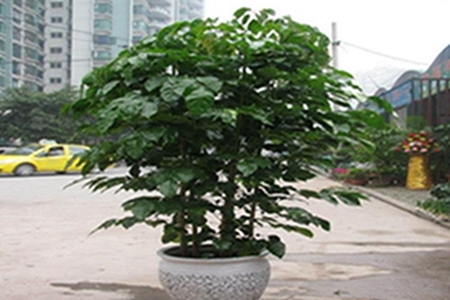
0
0
文章
巴黎铁塔
2018年05月08日


1、水黄
说白了这就是我们浇水的量特别多,导致它的土壤积水很久,透气性比较差,根也腐烂了,一般变现是它的嫩叶比较暗淡,而且没有光泽,新的梢慢慢萎缩。
解决方法:一般这个时候我们要控制水量,把它搬到阴凉的地方去,或者是把它脱盆晾干再放进去。

2、肥黄
如果我们给它施加肥料太多的话,它的老叶子就会慢慢枯萎变黄,新的叶子肥厚但是不会舒展开来。
解决方法:如果是这样的话,我们可以往上面撒上小白菜或者是萝卜的种子,等到它长出苗来,就可以把它的养分消耗掉。或者我们可以直接用水把肥冲走。其实我们给它施加的肥料也可以把控好,一般使用白云石等就会很好。

3、旱黄
这个主要是因为很少浇水,或者是它脱水严重,一般新的叶子颜色很正常,但是下面往上面走叶子会慢慢变黄脱落。
解决方法:这个就需要我们直接往里面浇水来解决,当然还是要控制好量,不可太多,要不然会引起其他问题。
4、碱黄
因为它是比较喜欢酸性的土的,但是因为在北方水是偏碱的,所以叶子就可能会变黄。
解决方法:这个时候我们要改变给它的水,一般可以使用发酵之后的洗米水或者是雨水。当然,我们也可以往水里面加一些醋,这样子它能够比较好地成长,叶自然也不会成这样了。

0
1







